|
|
|
|
September 2023 Meeting
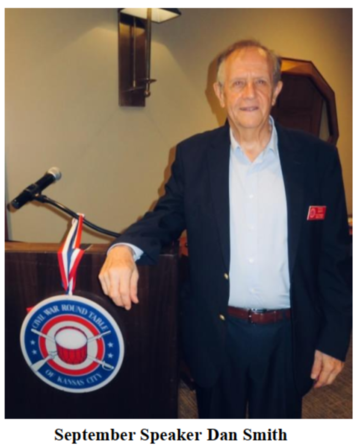
At the dinner meeting on September 20th, Round Table member Dan Smith gave a well-researched and interesting program titled: “The Battle that Saved the Nation’s Capitol: Monocacy July 9, 1864”
The Valley Campaign of June 1864-April 1865 was initiated by the Confederates out of necessity and yet is less well understood than other the major Civil War operations. Gen. Robert E. Lee’s effort to relieve his embattled forces at Petersburg was a bold and daring plan under Gen. Jubal A. Early which nearly succeeded beyond all expectations. On the banks of the Monocacy River in Maryland, only forty miles from the White House, Early’s numerically superior Army of the Valley met the much smaller Federal force under Gen. Lew Wallace.
Dan Smith’s talk examined the details of this brief but extremely intense and bloody engagement at Monocacy. Gen. Wallace’s valiant defense retarded and disrupted the Confederate advance on Washington, D. C. Gen. Wallace is better known today as the author of BenHur, A Tale of the Christ. Yet, the heroics of the Federal forces under Wallace’s command produced Medal of Honor recipients and resulted in a pivotal holding action ultimately saving the Capitol.
The following are some of the key points made during Dan’s presentation:
- In the summer of 1864 the Union war effort is a failure. There is a stalemate at Petersburg. People are war weary. A lot of people don’t agree with Lincoln. He may not even win the nomination for president. Some disapprove of Lincoln’s handling of the war. General Grant was installed as the commander of the Union forces. However, he is considered a “butcher” after the battle of Cold Harbor.
- General Lee’s Confederate Army of Northern Virginia is under siege at Petersburg. Crops are not accessible to Lee’s army. Lee must do something to relieve the pressure on Petersburg and Richmond.
- The Battle of Monocacy was the product of necessity. Lee’s brazen gamble almost succeeded. An outnumbered Federal army was forced to protect the Capitol at Washington D.C.
- On June 13, 1864, Lee set in motion a 14,000 man Army of the Valley under Lt. General Jubal Early. This represented 1/5 of Lee’s army. Early was an 1837 graduate of Westpoint. He was a rough and tough commander. Early had 9,000 infantry and 5,000 cavalry under his command.
- This campaign for both sides consisted of amazing logistics, rapid deployment, and battle plans on the fly. There was little advance planning.
- The Union had only 3,500 troops to oppose Early’s army. Early ousted Union General David Hunter’s army from the Shenandoah Valley on June 17-18, 1864. There was no definitive plan to invade Washington D.C. At the beginning of July, Early approached Harpers Ferry VA. Union General Franz Sigel occupied Maryland Heights. On July 5-6, 1864, Early crossed the Potomac River near Harpers Ferry.
- Union Major General Lew Wallace’s headquarters were in Baltimore MD. He commanded the Union VIII Corps and was responsible for protecting New Jersey, Pennsylvania, Delaware, and eastern Maryland. The bridge over the Monocacy River had to be protected. Wallace vowed that the bridge would not be bothered without a fight.
- Brigadier General Erastus B. Tyler was the Union commander in Baltimore. Wallace arrived on July 5th. Tyler set up a defense of the stone bridge crossing the Monocacy River on the Baltimore Pike, utilizing rifle pits on a high bluff above the river and six artillery pieces.
- The government in Washington D.C. and General Grant took Early’s advance seriously. Brigadier General James B. Ricketts commanded the 3rd Division of the Union’s VI Corps. He had 1,600 troops that were deployed from Petersburg to Monocacy in 64 hours.
- Wallace gathered what cavalry he had. Colonel Clendenin’s cavalry troops encountered the leading edge of Early’s Confederate force on July 7th and was drastically outnumbered. Wallace’s 2,500 infantry and 230 cavalry were inexperienced and outnumbered.
- Ricketts’ troops left Petersburg on July 6th and arrived in Baltimore MD on July 7th. However, it took another 30 hours to get to Monocacy. Wallace now had 4,800 troops. He left Frederick MD on July 8th and advanced to Monocacy on July 9th to set up the Union’s defensive line.
- The main battle at Monocacy began at 9:00 a.m. on July 9th. However, the main body of the Confederate Army was still in Frederick MD demanding a $200,000 ransom.
- The Confederates captured the Best farmstead and barn. The Confederates attacked Ricketts’ force at the Worthington ford and house. From 1:00 to 4:00 p.m. the main body of Early’s army, under Major General John B. Gordon’s Division of 5,000 men, attacked the covered bridge on the Washington Pike. Wallace then ordered the bridge burned. The Union was under attack from both the right and left flanks. Gordon’s Confederate Division suffered severe casualties attacking Ricketts’ Division from the Georgetown Pike. Gordon said it was a desperate fight.
- The Confederates extended their lines to envelope the Union line. A total of 18 Confederate cannon hit both ends of Ricketts’ line and he was forced to withdraw.
- After the Battle of Monocacy, Early’s Army of the Valley then attacked Fort Stevens in Washington D.C. on July 12, 1864. Early broke off the attack and withdrew across the Potomac River to Lee’s Ferry.
- Wallace did not give up the railroad bridge without a fight. He delayed Early’s advance by one day. Wallace put up a stiff defense. The cost to defend Washington D.C. was 1,200 Union and 1,000 Confederate casualties (killed, wounded, and missing). Early left behind 400 wounded at Frederick MD.
- After the battle Wallace said: “These men died to save the Nation’s Capitol and they did save it.”
- There were two soldiers who were awarded the Congressional Medal of Honor for their actions at the Battle of Monocacy: Lt. George E. Davis (Company K, Tenth VT) and Corporal Alex Scott (Company D, Tenth VT).
- In summary, Dan Smith there was no plan by the Confederates. It was: “Let’s go north and see what happens.” The Confederates went out to collect ramsoms at Hagerstown and Frederick MD. The Confederates had no food, horses, or money. By collecting ransoms, the
Confederates got greenbacks. If at Hagerstown on July 7th, the Confederates could have overtaken the Union at Frederick MD, they could have put more pressure on the Capitol at Washington D.C.
At the Meeting
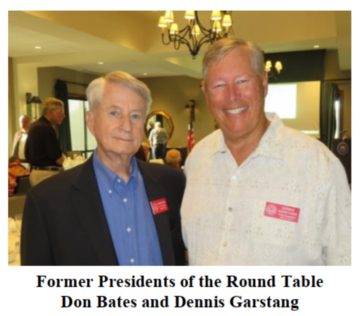
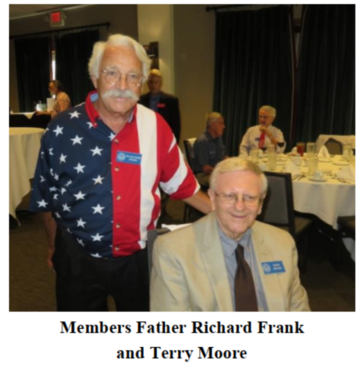

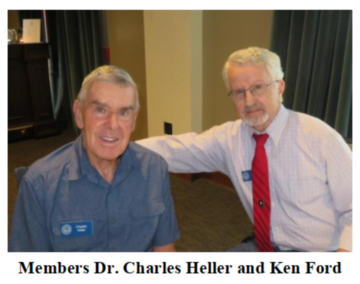

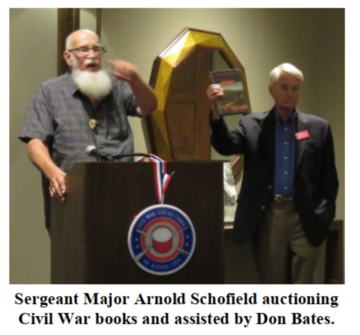
|
| |
|
|
|
|
|
|